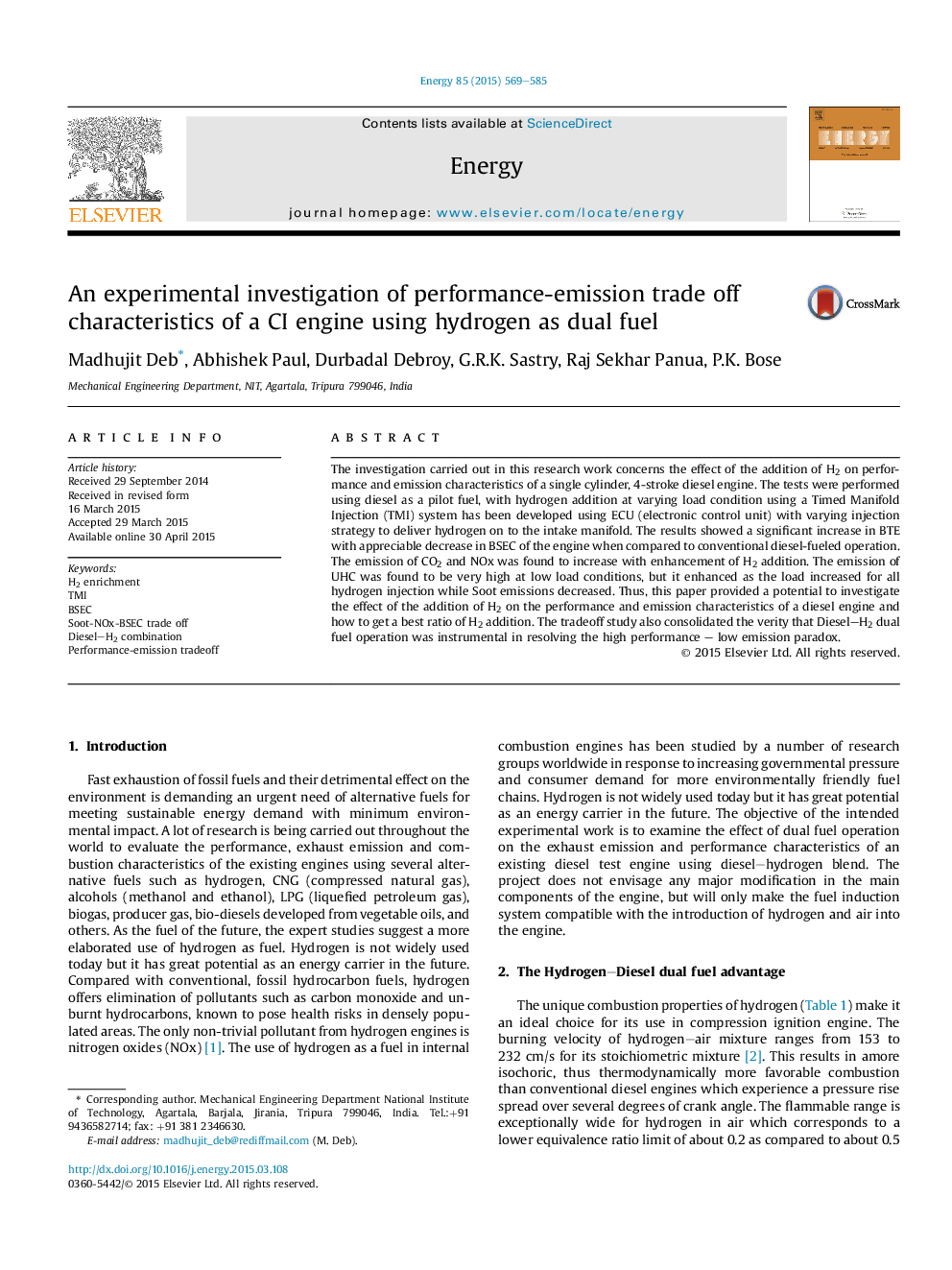| Article ID | Journal | Published Year | Pages | File Type |
|---|---|---|---|---|
| 1732101 | Energy | 2015 | 17 Pages |
•Pure diesel and diesel–H2 blends are tested.•Diesel–H2 blends produced higher brake thermal efficiency than pure diesel in all part loads.•Diesel–H2 blends reduced the energy consumption of the engine.•Diesel–H2 blends simultaneously reduced Soot to some extent but increases NOx and hydrocarbon emissions.•The performance-emission trade-off paradox has been studied using pure diesel and diesel–H2 blends.
The investigation carried out in this research work concerns the effect of the addition of H2 on performance and emission characteristics of a single cylinder, 4-stroke diesel engine. The tests were performed using diesel as a pilot fuel, with hydrogen addition at varying load condition using a Timed Manifold Injection (TMI) system has been developed using ECU (electronic control unit) with varying injection strategy to deliver hydrogen on to the intake manifold. The results showed a significant increase in BTE with appreciable decrease in BSEC of the engine when compared to conventional diesel-fueled operation. The emission of CO2 and NOx was found to increase with enhancement of H2 addition. The emission of UHC was found to be very high at low load conditions, but it enhanced as the load increased for all hydrogen injection while Soot emissions decreased. Thus, this paper provided a potential to investigate the effect of the addition of H2 on the performance and emission characteristics of a diesel engine and how to get a best ratio of H2 addition. The tradeoff study also consolidated the verity that Diesel–H2 dual fuel operation was instrumental in resolving the high performance – low emission paradox.
